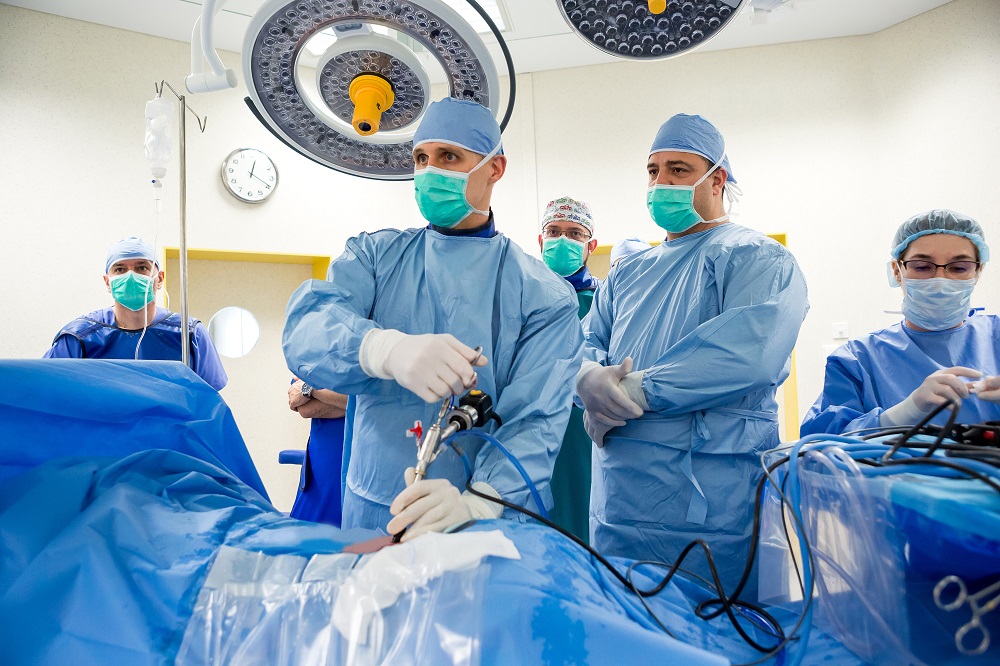July 16th, 2018
July 16th, 2018
Patients of Carolina Medical Center benefit from the latest solutions in the treatment of spine diseases. We develop minimally invasive surgery, which is an alternative to classical methods or microsurgical operations that require significant interference in tissues, e.g., dissect muscles. Our doctors specialize in endoscopic operations, which are currently the least invasive among minimally invasive surgical methods.
Carolina Medical Center, as the first in Poland, introduced joimax® equipment for endoscopic spinal surgery. These are modern, technologically advanced instruments and endoscopes used in minimally invasive spinal surgery in the lumbar and thoracic spine. This treatment method allows treatment of almost all cases of hernias and spinal stenosis.
INDICATIONS:

ENDOSCOPIC TREATMENT OF SPINE DISORDERS GUARANTEES:
DESCRIPTION OF OPERATIONAL TECHNIQUE (DISC HERNIA)
The operation method using joimax® is performed in the operating room. The patient is positioned on his side (lateral position) or stomach (prone position).
Step 1
The surgeon makes a small skin incision (0.5 – 1 cm) and creates a canal leading directly to the place of the hernia. The surrounding tissues are carefully moved without cutting. As a result, the muscles and paraspinal ligaments and bones are not affected.
Step 2
The surgeon inserts an endoscope through the opening that leads to the treatment area. The doctor carefully removes the hernia of the intervertebral disc.
Step 3
The surgeon removes all instruments and puts stitches and dressin on a small incision. After surgery, only a small scar remains. The patient can leave the hospital one day after the surgery.